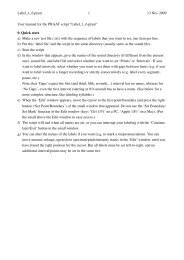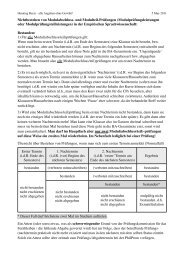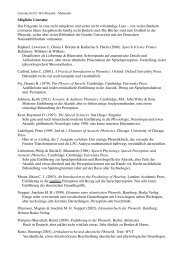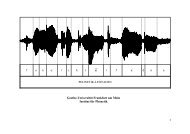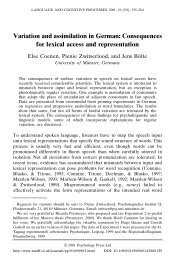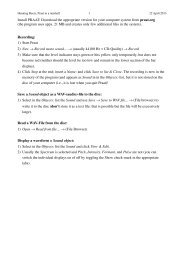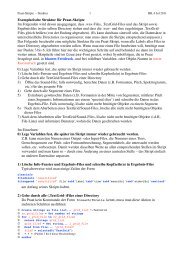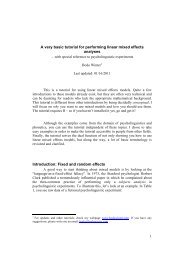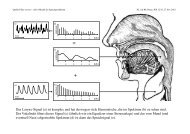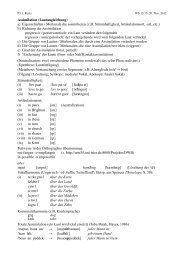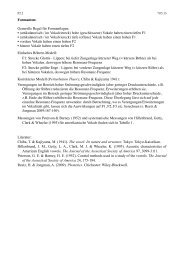Language and Cognitive Processes - Institut für Phonetik
Language and Cognitive Processes - Institut für Phonetik
Language and Cognitive Processes - Institut für Phonetik
Create successful ePaper yourself
Turn your PDF publications into a flip-book with our unique Google optimized e-Paper software.
Downloaded By: [Universitaetsbibliothek] At: 15:27 19 June 2007<br />
376 SPINELLI, SEGUI AND RADEAU<br />
corrected vision <strong>and</strong> reported no hearing impairment. Half of them were<br />
tested in the partial priming condition, <strong>and</strong> the other half in the bisyllabic<br />
priming condition.<br />
Stimuli <strong>and</strong> design. For the partial priming condition, the primes were<br />
re-recorded tokens of the primes used in Experiment 1a. The average<br />
duration of the primes was 343 ms for the initial-overlap set, 369 ms for the<br />
nal-overlap set <strong>and</strong> 395 ms for the control condition.<br />
For the bisyllabic priming condition, the 36 bisyllabic word targets of<br />
Experiment 1a also served as targets. Three bisyllabic prime words were<br />
chosen for each target. One began with the rst syllable of the target (e.g.,<br />
verger-VERTIGE, [orchard- VERTIGO], beginning-overlap condition);<br />
one ended with the second syllable of the target (e.g., prestige-VERTIGE,<br />
nal-overlap condition) <strong>and</strong> one was not related to the target (e.g.,<br />
tambour [drum]- VERTIGE, control condition). Stimulus word frequencies<br />
(per million) were as follows: initial-overlap primes, 8; nal-overlap<br />
primes, 8; control primes, 7. Stimulus word durations (in milliseconds)<br />
were as follows: initial-overlap primes, 575 ms; nal-overlap primes, 613<br />
ms; control primes, 611 ms. Thirty-six bisyllabic pseudowords containing<br />
two embedded words served as catch trials. As ller targets, 120 bisyllabic<br />
items (60 words <strong>and</strong> 60 pseudowords) were included in the experimental<br />
lists. One hundred <strong>and</strong> twenty bisyllabic words unrelated to the targets<br />
served as ller primes. The proportion of related items was 25%. The<br />
experimental words <strong>and</strong> pseudowords are listed in Appendix C.<br />
Procedure. The prime words were recorded in a soundproof room by a<br />
female native speaker of French. The stimuli were sampled at 44 kHz <strong>and</strong><br />
then transferred in a computer at a sampling rate of 22.05 kHz <strong>and</strong> 16 bit<br />
conversion using the Wave Studio sound editor. Participants were tested<br />
individually in a quiet room. The prime was presented auditorily at a<br />
comfortable sound level through Sony MDR-P1 headphones. At the end<br />
of the auditory prime <strong>and</strong> after a delay of 50 ms (ISI), the target was<br />
visually displayed in upper case at the centre of the computer screen <strong>and</strong><br />
remained on the screen until the participant’s response. The participants<br />
were informed that the visual target could be either a word or a<br />
pseudoword <strong>and</strong> were asked to perform a lexical decision task on the visual<br />
target. The computer clock was triggered by the presentation of the target<br />
on the screen <strong>and</strong> stopped by the response. Each participant was tested<br />
either in the partial or in the bisyllabic priming condition.



